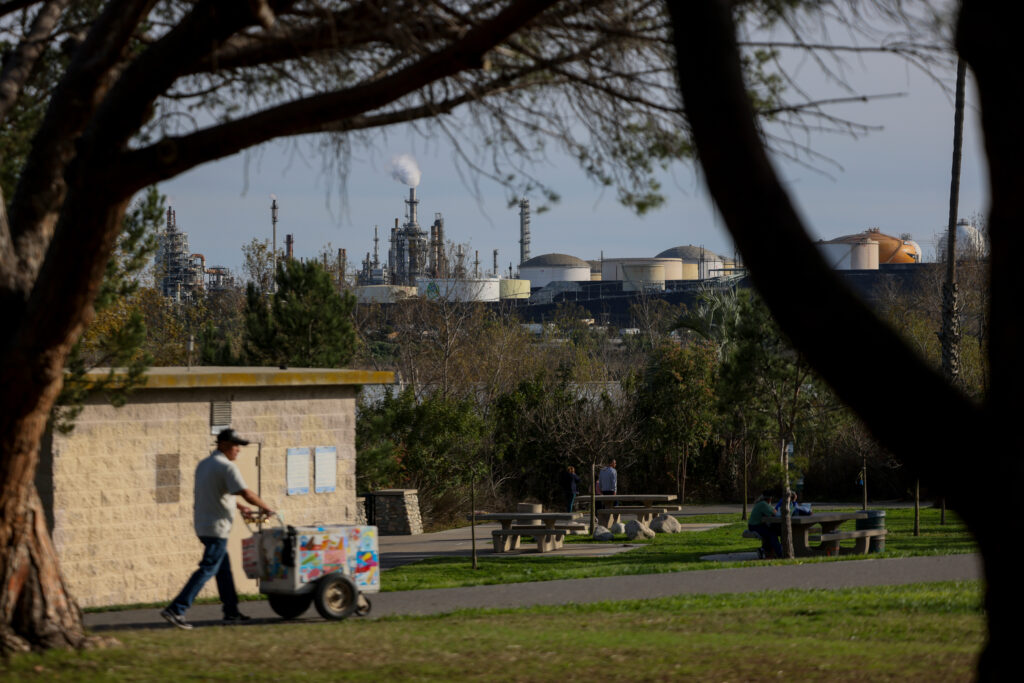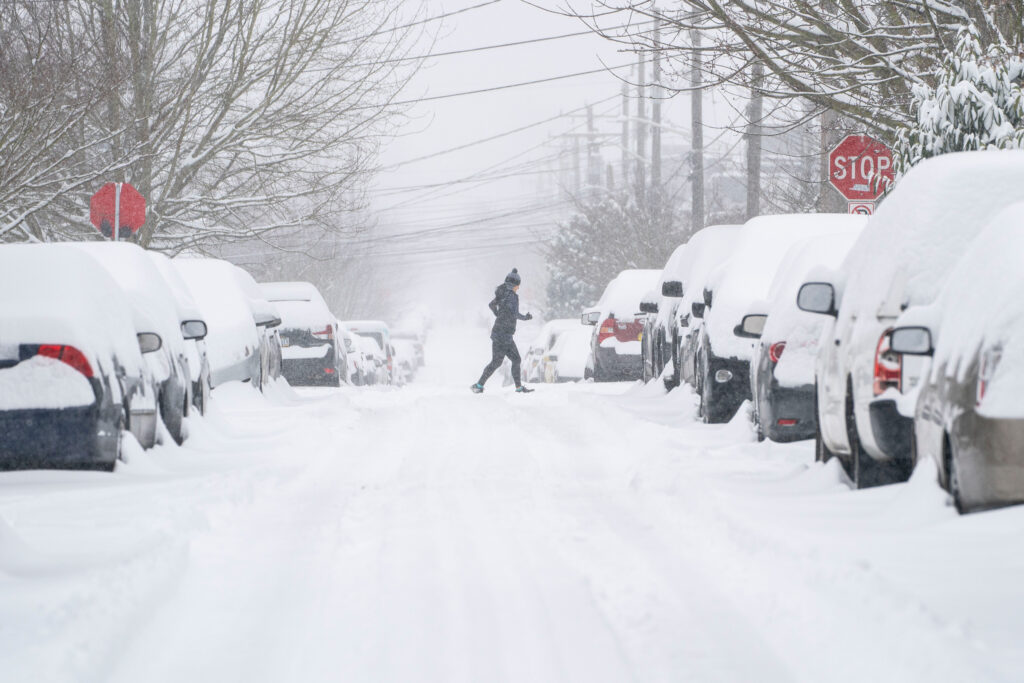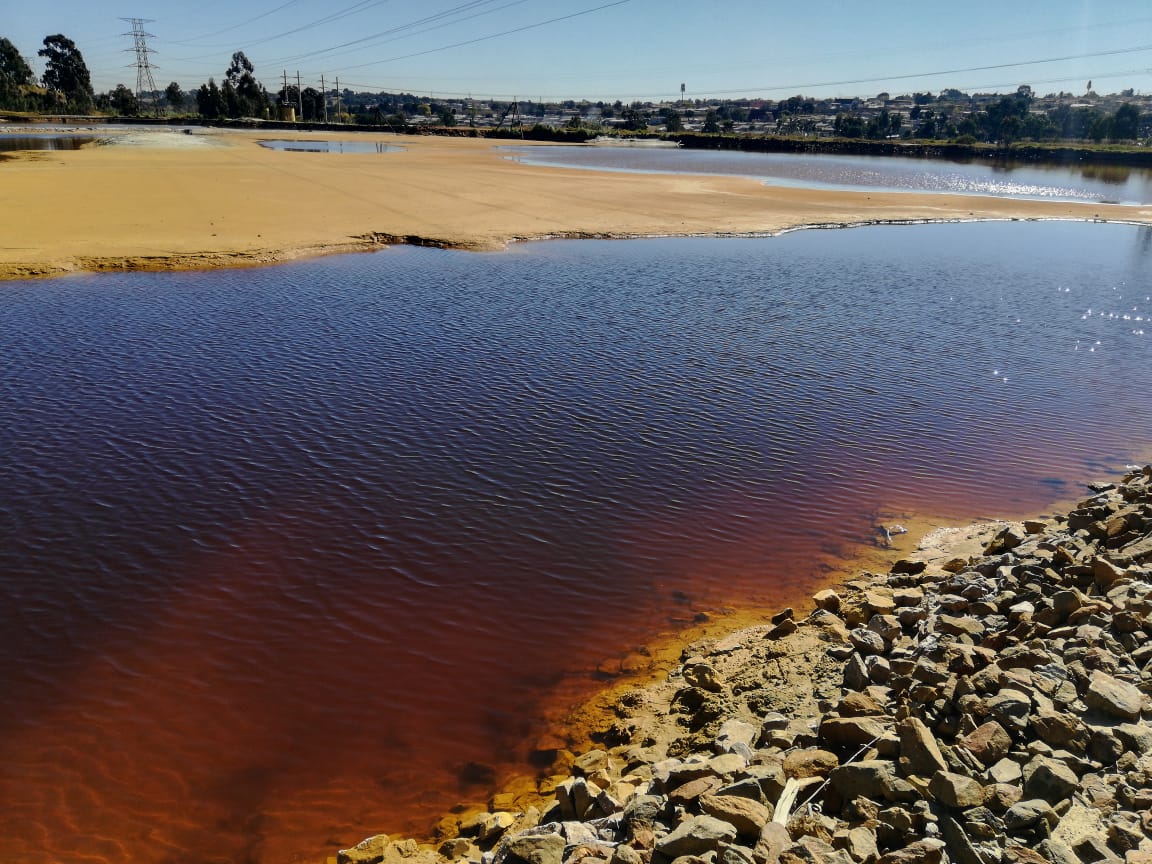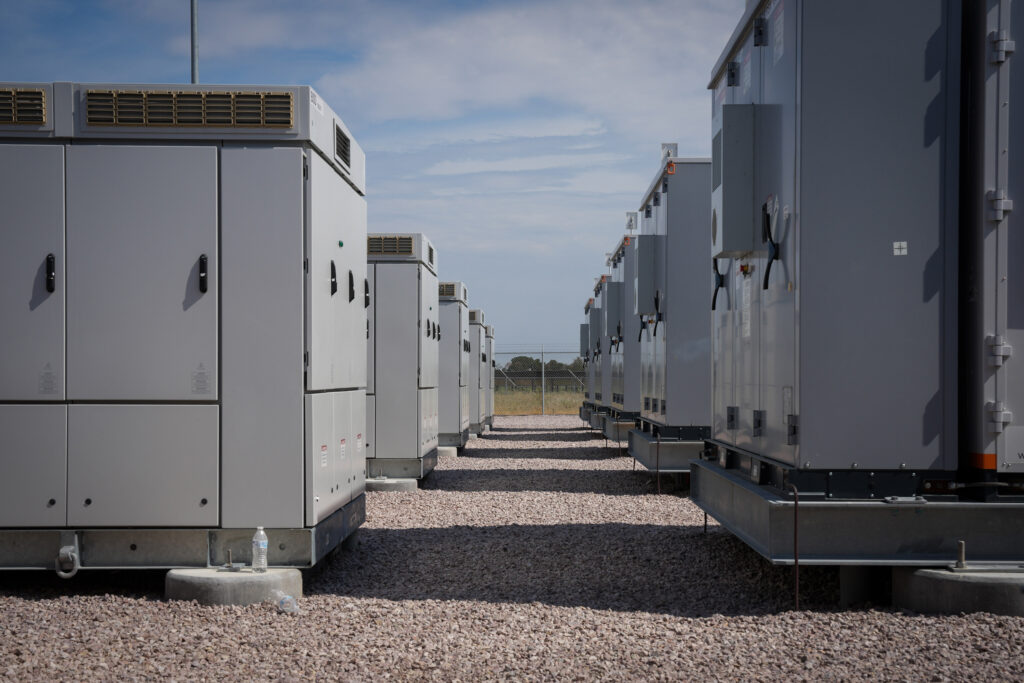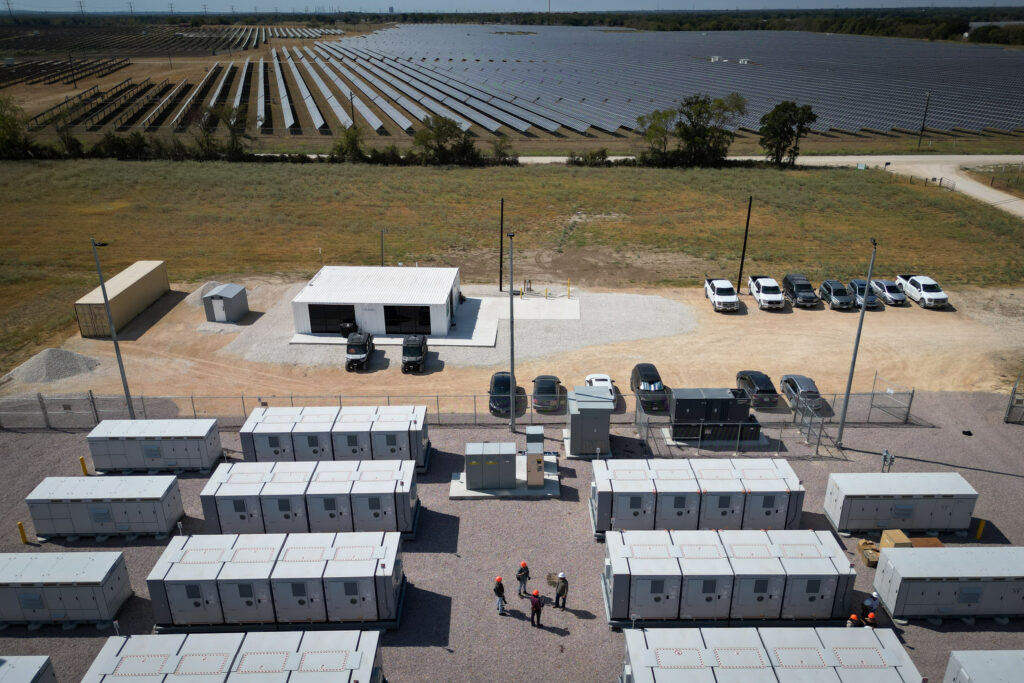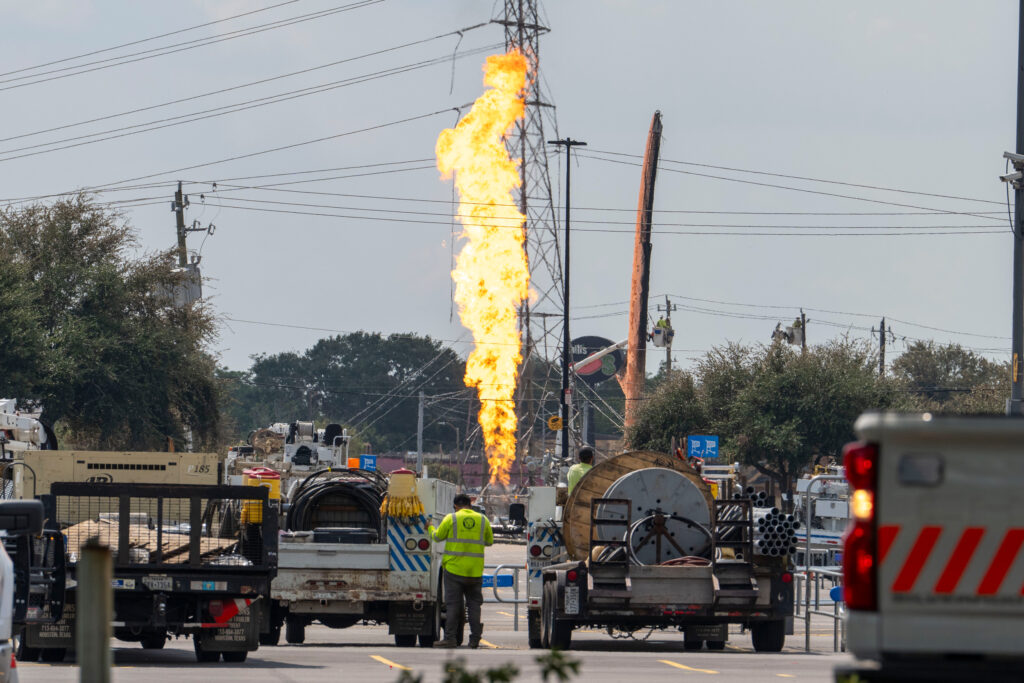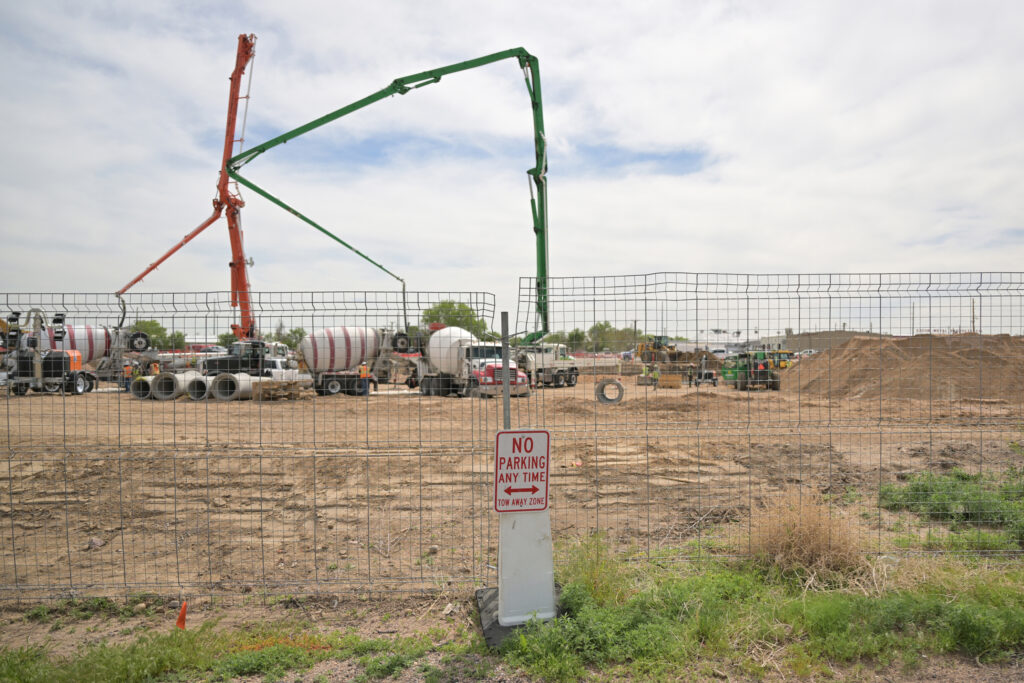For the first time, Pennsylvania fracking companies are facing real-time scrutiny from federal and state regulators over emissions of methane and other harmful air pollutants at drilling sites and storage facilities for toxic wastewater left over from oil and gas extractions.
The Environmental Protection Agency (EPA) is requiring more robust tracking at extracting sites across the country through the use of on-site devices to measure methane leaks from wells and low-pressure sources such as wastewater storage tanks. It also announced penalties for companies found to exceed emission thresholds.
In addition, Pennsylvania has launched a pilot program with CNX Resources Corp., one of the biggest oil and gas producers in the Marcellus Shale, to better gauge and understand on-site emissions from the fracking industry.
Melissa Ostroff is among the environmental sleuths who has questioned emissions in rural Pennsylvania, and she remains cautious about how and when communities will benefit from any of the changes. The EPA is giving states up to two years to implement the reforms.
We’re hiring!
Please take a look at the new openings in our newsroom.
See jobs
For the past couple years, Ostroff, a policy advocate for the nonprofit Earthworks, has routinely documented plumes of invisible emissions from wells and storage tanks located on drilling sites using an optical infrared camera sensitive to hydrocarbons.
Earthworks has filed 134 complaints about the vapors and emissions from sites in Pennsylvania, with over half of those captured by Ostroff since 2021. Ostroff, who wields a hand-held video camera comparable to what industry monitoring professionals use, has filed reports and footage with state regulators about potential leaks and breaches of emission standards from both storage tanks and the wells.
“There’s something very different from seeing a well with nothing coming out of it and then putting the camera to your eye,” she said.
Ostroff has led state lawmakers and local community members on tours—from vantage points that are steps or fields away from drilling sites, always on public property—to peek through her high-resolution lens. They are all startled, she said, as the invisible becomes visible. There are vapors in the air. Around the tanks, she has recorded mists that the naked eye cannot see, drifting from vents atop the containers or seeping around the ground.
While Ostroff can document potential errant discharge, she has no way to measure volumes or the vapor’s content. Still, “it was shocking,” said Gillian Graber, founder of Protect PT, an environmental organization in Pennsylvania focused on the effects of oil and gas drilling.
Graber has been on several Earthworks tours, and said she has observed a well venting near her daughter’s school in Westmoreland County. “When you have the vent infrastructure near schools and parks where people are running and walking, walking their pets—this is really problematic,” she said. “There needs to be some way to capture these vented materials.”
The vapors detected by Ostroff’s camera can include methane, a greenhouse gas over 80 times more effective at trapping heat in the earth’s atmosphere than carbon dioxide, and naturally occuring volatile organic compounds that come back to the surface in wastewater after drilling, including benzene.
“None of it is great for the environment,” said Dave Yoxtheimer, a Penn State hydrogeologist who studies the Marcelus Shale in Pennsylvania. Wastewater emissions may adversely affect human health, too. Yoxtheimer listed a medley of volatile organic compounds (VOCs) that storage tank emissions can contain: benzene, toluene, ethylbenzene and xylene. “If you’re exposed to them over a prolonged term at a high enough concentration, I mean, these are carcinogens,” substances capable of causing cancer, he said.
Late last year, the EPA unveiled enhanced standards for monitoring pollution sources and, for the first time, rules that require producers to actively search for leaks. In a major change, companies operating large sites must use sensors or other technology to monitor for emissions—both at new wells and those already in operation. Methane is the single biggest driver of climate change after CO2.
Sites with just one well will be inspected using human audio, visual and olfactory monitoring approaches. In January, the agency announced penalties for violators: $900 fines on every excess ton of methane that oil and gas that companies emit annually, increasing to $1,500 in 2026 and thereafter.
“This is the first time that we’ve seen a rule from the EPA that is going to regulate existing and new sources when it comes to methane” emissions, said John Rutecki, a regulatory and legislative manager with the nonprofit Environmental Defense Fund. And he points out that wastewater tanks are now a target.
“Getting storage vessels on there has been very important for frontline community members,” Rutecki said, and the new monitoring demands may “provide some health protections” to communities near oil and gas fields.
The oil and gas industry has never conducted accurate monitoring of emissions from storage tanks, on-site reservoirs for byproducts of the drilling process. The tanks hold a highly saline liquid containing a mix of volatile organic compounds (VOCs), including naturally occurring benzene, arsenic and radium 226 and 228 dredged up during hydraulic fracturing of shale formations deep underground.
Companies routinely vent the storage tanks to relieve built-up pressure, and to report their emissions, they calculate estimates based on the chemical makeup of the wastewater and the size of the tank. Some producers had not been legally required to monitor, measure or capture emissions in real time, which creates uncertainty about what floats into the air or settles on the ground near the site.
Ostroff’s experience is a case in point. She records vapors from tanks and shares those videos with regulators. They are rarely moved to investigate. “They say ‘they’re allowed to vent. They have to vent. There is not an alternative.’” she said.
In Pennsylvania, large tanks that are calculated to emit more than 200 tons of methane and 2.7 tons of VOCs annually must reduce their emissions by 95 percent, but tanks under those thresholds can be vented as often as a company chooses.
The new EPA rule, which the Biden Administration says will also reduce the amount of VOCs emitted by the oil and gas industry, requires a 95 percent reduction in methane emissions from storage tanks that have the potential to emit more than six tons of VOCs or 20 tons of methane annually. It also requires companies, instead of venting, to capture or transform the emissions, either by rerouting them to flares, or using “vapor recovery units,” to snare fugitive methane for further processing.
Kenneth Davis, a professor of climate and atmospheric science at Penn State University, has measured emissions at oil and gas sites across the United States and, in particular, the volumes of emissions from sites within the Marcellus Shale. For a year and a half starting in May 2015, Davis and his team tagged cell phone towers with air quality monitors that allow for readings about 100 meters above ground. They also tracked emissions using an aircraft. Altogether, Davis’s team recorded emissions that were at least twice as high as the emissions reported by the industry.
Davis said he found “without question” that chemical vapors can travel far from the emissions source. The closer a person lives to an oil and gas well or to a wastewater storage tank, the more likely that person will breathe compounds churned up by excavations, Davis said.
“Folks are doing their best to account for what they know” when measuring and reporting emissions now, he said, but without better ways to monitor or regulatory demands, emission records are uncertain. “What appears to be true is that there are large, unplanned or large point source emissions that are not part of the inventory” reported to government agencies, he said.
If the industry cooperates to dispel the discrepancy between reported and observed emissions, “there’s hope,” Davis said.
David Hess, a blogger and former secretary at the Department of Environmental Protection (DEP) in the state, regularly culls agency reports on methane leaks at drilling sites and sees the gaps in oversight. “It may be normal operations but they’re releasing a lot of methane into the atmosphere uncontrolled,” he said. “From reading the inspection reports, it seems like there’s lots of holes in how those emissions are regulated.”
In Pennsylvania, a months-old partnership intended to help companies and regulators better understand the environmental and human health effects of oil and gas sites may not yield the oversight and regulation that environmentalists see possible in the new EPA rules.
A pilot program championed by Gov. Josh Shapiro and CNX, a major oil and gas producer, has given DEP inspectors “unprecedented access” to two wells—out of the hundreds of thousands now operating in the state—to assess emissions. The company, which has been cited since 2020 for more than 400 violations by the DEP, including incidents where CNX failed to prevent wastewater from flowing into waterways, also agreed to disclose, with some restrictions, what chemicals are used in the fracking fluid. It agreed to provide some real-time emission monitoring to DEP regulators at sites in Washington and Greene counties, both south of Pittsburgh.
A section of the four-page agreement, called “CNX’s Radical Transparency Efforts,” shows that the company’s chemical disclosures would still be “subject to trade secret claims by chemical manufacturers,” exempting them from regulation under the federal Safe Drinking Water Act. In addition, real-time air quality data “may be delayed or suspended by CNX at its discretion.”
CNX agreed to conduct pre-drill water surveys for residential drinking water supplies existing “within 2,500 ft of a vertical unconventional well bore, and any newly constructed centralized large volume storage tank battery.” CNX’s Washington County site was built in 2023, and it is unclear from the agreement’s language whether “newly constructed” storage tanks applied to wastewater tanks already on the premises or yet to be built.
Since the partnership was announced, environmentalists have questioned whether the limited effort is capturing potential problems or helping to confuse matters.
State Sen. Katie Muth, who has introduced legislation to classify wastewater from fracking as hazardous material, said the governor’s pact with CNX doesn’t do enough or ask enough of the company. “It’s not a full suite of what needs to be monitored,” said Muth, a Democrat.
“Out of the however many hundreds of wells they have, they’re monitoring a ridiculously low number of wells,” she said, adding a question for CNX, which last year posted $1.3 billion in revenue: “Why aren’t you monitoring all your wells?”
Graber is bothered by the voluntary nature of the partnership. “I do not think companies will do anything that they are not mandated by law to do,” she said. “The people of Pennsylvania don’t trust these companies,” she said. People “don’t trust them to do the right thing.”
This story is funded by readers like you.
Our nonprofit newsroom provides award-winning climate coverage free of charge and advertising. We rely on donations from readers like you to keep going. Please donate now to support our work.
Donate Now
CNX did not return requests for comment for this story. In a press release Shapiro issued in November, Nick Deiuliis, the company’s CEO, said CNX plans to use its partnership with the DEP to provide “open-sourcing facts, science, and data to all stakeholders,” to create “mutual trust which can serve as the basis for cooperation and real environmental and economic progress in the Commonwealth.”
For environmentalists like Ostroff, the CNX experiment only emphasizes that state regulators are reliant on slim evidence to protect from potential harm, and she questioned the science and monitoring methods at the two sites.
“CNX is using static air monitors. They’re capturing what is in the air at that time” rather than measuring emissions from the sources and observing how they travel, Ostroff said. She plans this spring to video a handful of wells that she has yet to see up close—and she wants to record video from the two CNX wells now under DEP review.
“If Pennsylvania implements [the new EPA rules] in a way where there are more frequent inspections from operators and if that is actually enforced, it should make my job easier,” Ostroff said. “Without proper enforcement, we’re not going to actually see any changes.”








